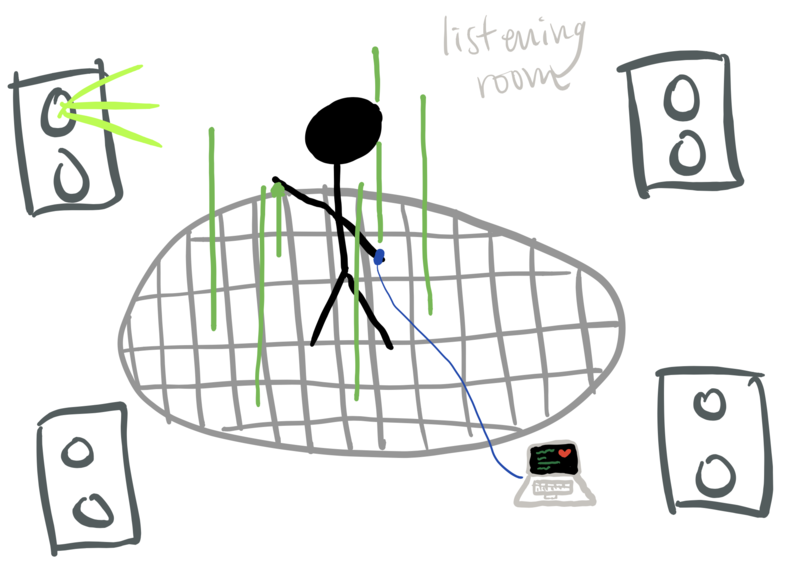Christie 220c Spring Project
Week 1
I enter the course wide eyed and bushy tailed, feeling I can conquer the world via computer music. Namely, I want to find a space in San Francisco, maybe the Midway SF (yes, I am a woman with unrealistically high ambitions), and curate a musical set based on a physical setup.
After this first week, however, I have been inspired by my classmates. While the above would be a compelling project, I am invigorated by the possibility of taking advantage of the manipulation of sound via real-time light manipulation. I am reminded of this video Ge showed in 220b: Manual Input Sessions by Golan Levin and Zachary Lieberman.
In researching more work by Levin and Lieberman, I stumble across another collaboration of theirs, Footfalls. This installation compels me to think of creating a larger scale interactive system. openFrameworks seems to be the software used to develop these projects; this is a program with which I am unfamiliar...
Week 2
Further research on feasible options. I have tried to dive into openFrameworks a little and am quite basic with the program.
I found some important videos that I believe are the final inspiration for my project:
Interactive Laser Technology
On Your Wavelength
Especially the second example. I found the drive of the biology of the human body as such an integral part of the installation quite powerful and interesting. So, I believe I have *finally* formed the current vision:
A physical installation in which the user has a heart rate monitor on their finger or arm. The pulse of their heart sets the tempo (fixed? impermanent?) of the music. They then interact with a set of light beams around them to create another sound layer over the tone of their pulse.
After speaking with Chris, I latched onto the idea of having this in the listening room with lasers coming from under the grate, with the user in the middle of the room.
I think my biggest obstacle with this project will be my lack of experience with programming, so I reached out to Golan Levin (mentioned earlier). He referred me to Camille Utterback and Paul DeMarinis here on campus, both with quite the impressive resume regarding creative coding and computational and interactive new media arts. Perfect!
Week 3
Continued research. I reached out to Camille and Paul. The latter, while extremely busy this week, is squeezing me in to chat this Thursday. In the meantime, I have made a checklist of the basics which I hope to nail down by next week:
ο link up with Paul (and hopefully Camille?) and whittle down exactly where to begin coding
ο shopping list:
- ο reasonably priced laser beams
- ο probably purchase ~20 to play around with and see how many can be utilized in the listening room
- ο heart rate monitor
Aaaaand, now I present you with a rough sketch of what I foresee as a final. I am absolutely abysmal at drawing, so please excuse this.
